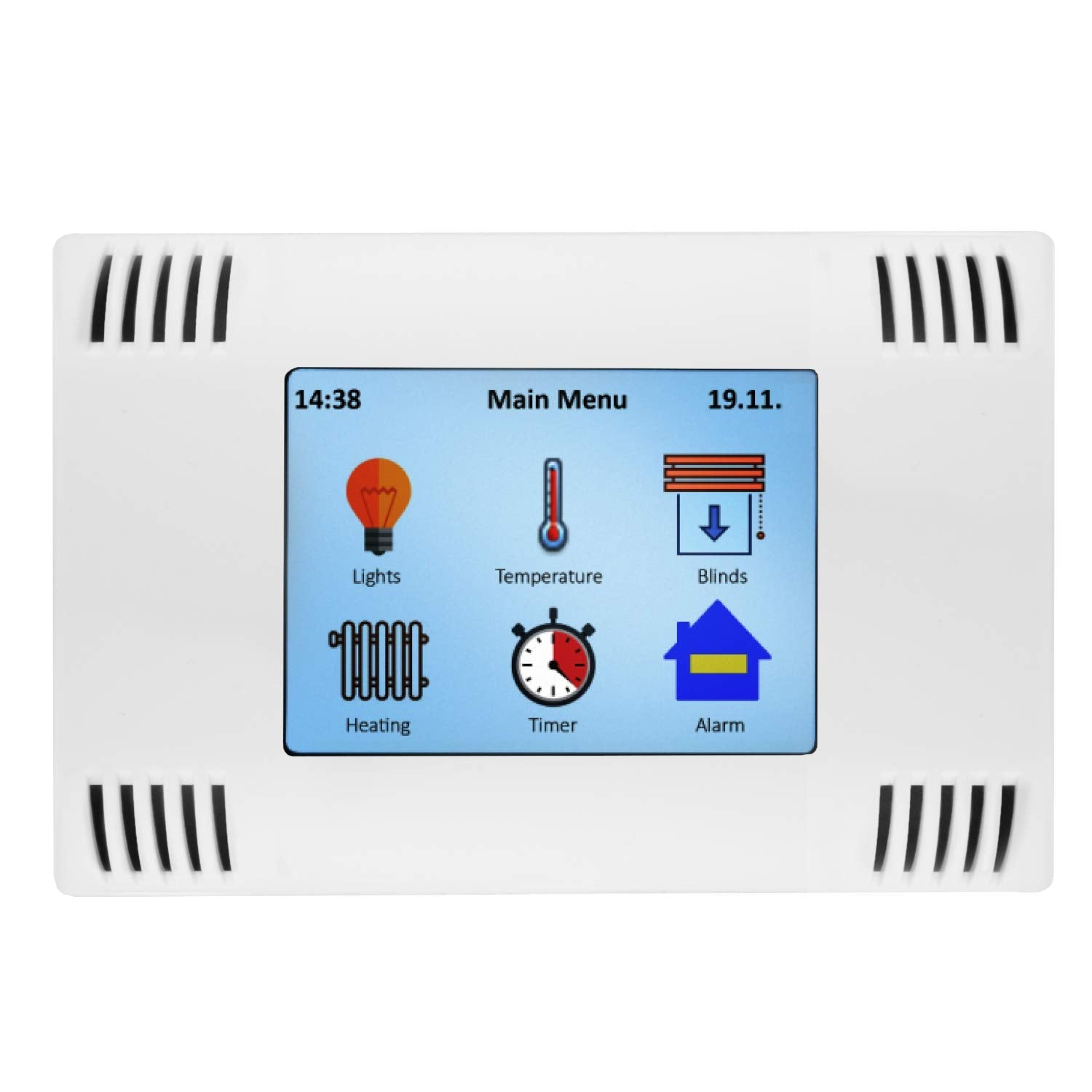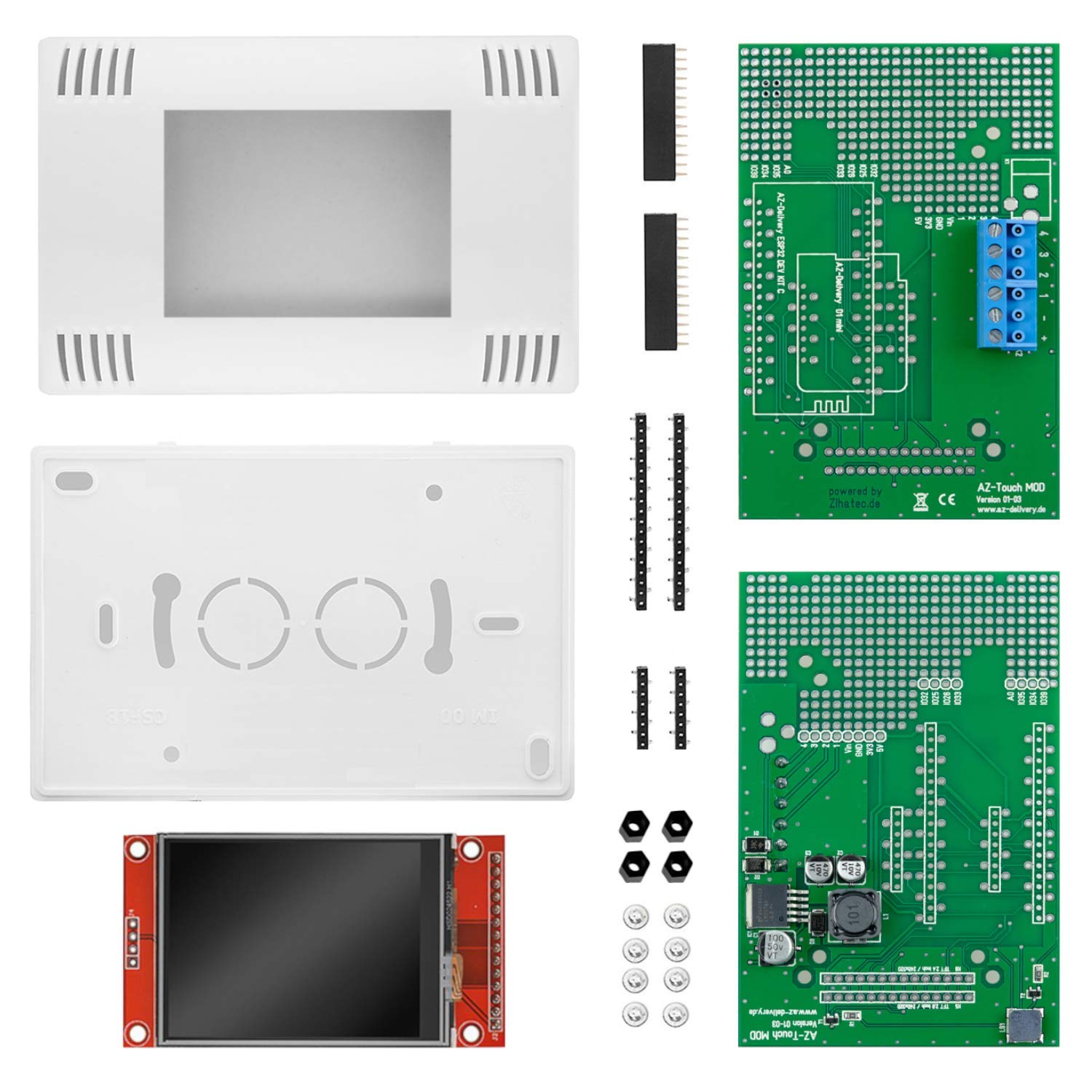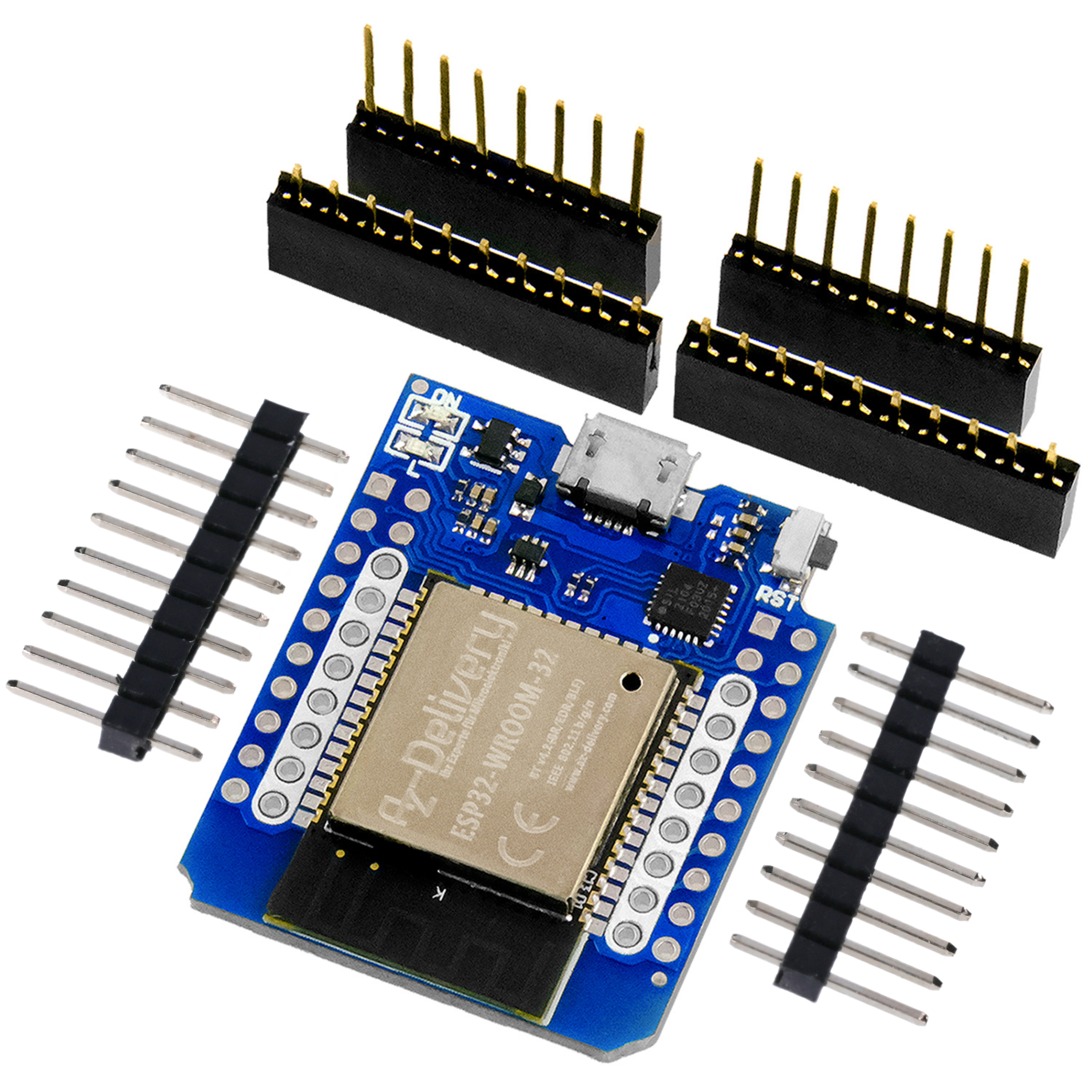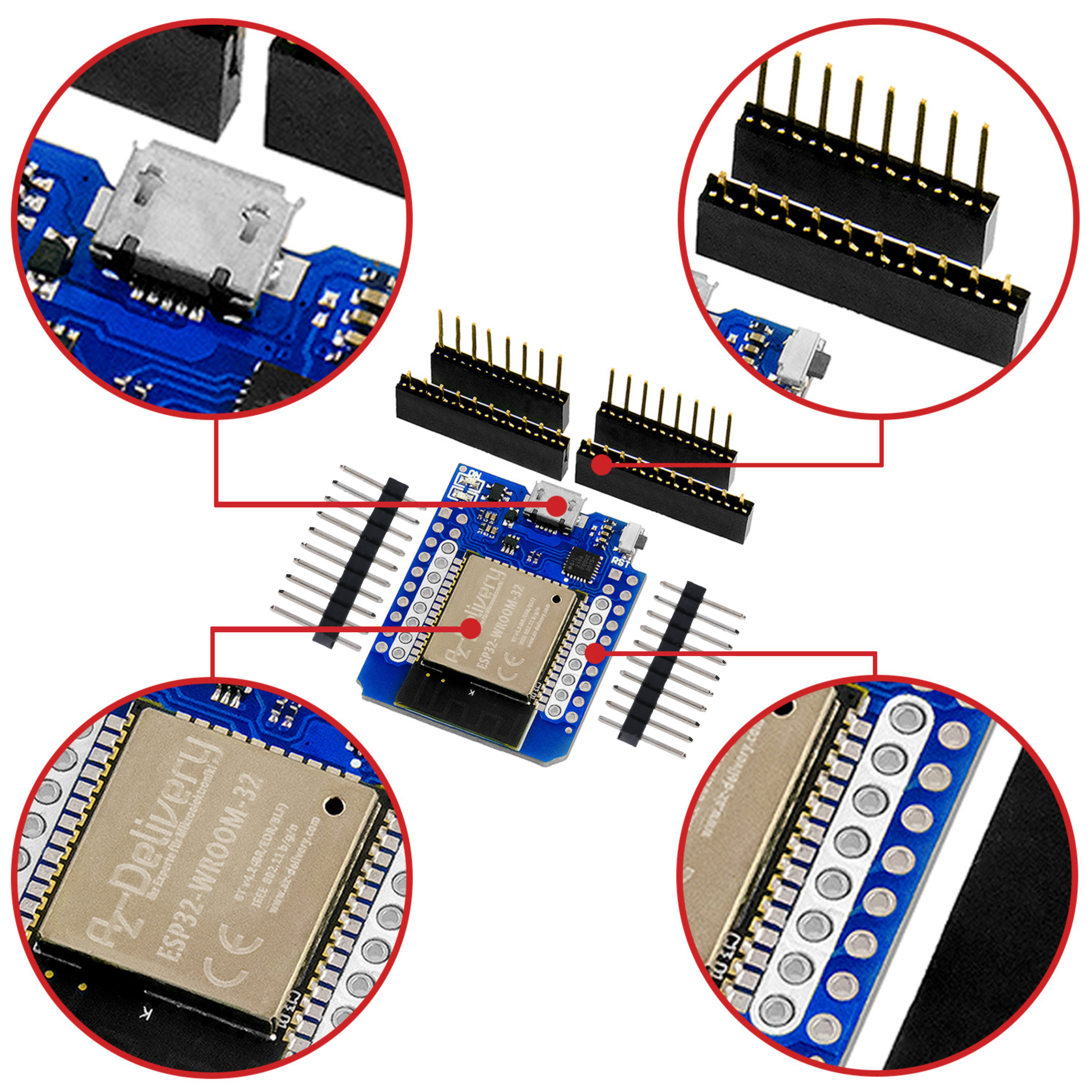Robotics is no longer a vision of the future - it is part of our everyday lives. Whether in industry, medicine or the smart home: intelligent systems that think, react and move are at work everywhere. But how is a robot created? How does the interaction of sensors, motors and software work?
You don't need a laboratory for this. With the right learning projects, modern technology can be experienced directly at your own desk - in a practical, creative and tangible way. Two particularly exciting examples of this are the ESP32 Smart Car and the four-legged bionic spider robots.
Both projects combine fun and knowledge, promote creativity and an understanding of technology - and turn curiosity into knowledge. They are not just construction kits, but small adventurous journeys into the world of robotics. Suitable for children aged 10 and overThey enable children, young people and tech-savvy adults to learn, experiment and implement their own ideas. From the first cable to the finished movement routine, a real understanding of how technology works is created.
The ESP32 Smart Car - When programming comes to life
The ESP32 Smart Car is a prime example of what playful learning can look like today. It combines mechanics, electronics and programming into a compact, practical system that will delight beginners and advanced users alike.
Technology you can touch
The vehicle is made of sturdy, transparent components and moves on four special wheels, which - similar to a tank - allow it to move in all directions. This means that the Smart Car can not only move forwards and backwards, but also sideways or diagonally across the table.
Even during assembly, you learn how motors work, how circuits are constructed and how sensors communicate with each other. The central control unit is a ESP32 development boardthe "brain" of the vehicle. It controls motors, LEDs, ultrasonic and infrared sensors and connects everything via WLAN or Bluetooth.
Programming
At the heart of the project is the software ACECode - a graphical development environment based on Scratch. Instead of complicated syntax, commands are simply executed via Drag & Drop put together. This means that even beginners can create their first programs and set the Smart Car in motion in just a few minutes.
With additional blocks, functions such as Obstacle detection, Line sequences, IR remote control or Smartphone control add. The result is an adaptive vehicle that independently decides how to behave - a first step in the direction of Autonomous driving in miniature.
Advanced users can also connect the vehicle directly to the Arduino IDE and develop your own routines or extensions. This makes the ESP32 Smart Car suitable both for beginners in graphical programming and for experienced makers who want to delve deeper into the software logic.
Learning with storytelling - the "Cosmic Intelligence Challenge"
The set combines technology with an exciting story:
You land on the fictitious Planet X and enter the "Cosmic Intelligence Challenge". Together with your digital assistant Lumi, you program your intelligent vehicle to complete missions - avoiding obstacles, activating light control or navigating through the dark.
This narrative approach turns learning into an experience. Along the way, you deepen your knowledge of Electronics, programming and sensor technology - without it feeling like a lesson.
This is what you learn with the Smart Car:
-
Graphical programming with ACECode
-
Understanding of Sensors and actuators (LED, ultrasound, infrared, motor control)
-
Maker competence: Assembly, wiring and circuit technology
-
Practical robotics concepts: Obstacle avoidance, line sequences, WLAN control
The best thing about it: when your own vehicle reacts, steers or dances, you know "I programmed that!"
And this is just the beginning: add-on packs are planned for the future, which will make the system even more versatile - for example with additional sensors, camera modules or new control functions. In this way, the smart car grows with the capabilities of its users and remains an exciting learning and development project in the long term.
The bionic spider robot - movement like in nature
While the Smart Car rolls across the table on wheels, the bionic spider robots through its organic, precise movement. Inspired by nature, this project shows how finely tuned mechanics, sensor technology and programming work together.
Structure & technology
The robot is based on a ESP8266 microcontrollerwhich is equipped with a servo extension board with eight Servomotors controls - two per leg. The sturdy acrylic housing ensures stability and gives the robot a modern, futuristic look.
Each servo takes on a precise task - such as lifting or stretching a leg - and is brought into the correct starting position before assembly. This ensures that all legs move synchronously - the basis for stable, lifelike movements.
From individual parts to a living machine
The assembly is an experience: from inserting the servos and screwing together the acrylic parts to wiring the circuit boards, a functioning machine is created step by step. You learn how movements are created, how joints interact and how electricity and data "bring the robot to life".
Programming made easy
With the ACE code extension "Four-legged Bionic Spider" movements can be defined using block control - without any complicated formulas. After uploading, the robot lifts, walks, turns, stops or dances.
Finely tuned servo movements simulate real spider movements - rhythmic, stable and precise. Advanced users can also use the WLAN control and operate the robot via an app - an ideal introduction to the world of robotics. Internet of Things (IoT).
Movement sequences that inspire:
-
Forward and reverse operation
-
Turns to the left and right
-
Sideways movement
-
Dance program with servo choreographies
-
App-controlled WLAN control
The result: a robot that moves fluidly and vividly - built, programmed and understood by its creators.
Learning through experience
Both projects - the ESP32 Smart Car and the bionic spider robots - are not pure handicraft sets, but Complete learning systemsthat combine knowledge, creativity and enthusiasm.
From the first screw to the first self-programmed motion sequence, you experience at first hand how a functioning system is created from logic, electronics and curiosity. You not only learn how to program, but also how to think like an engineer: Identify problems, find solutions, optimize processes.
And best of all, both projects form an excellent basis for their own ideas - from autonomous vehicles with camera recognition to sensor-controlled pets.
⚠️ Only available in limited quantities - available soon!
The learning systems ESP32 Smart Car and bionic spider robot are not yet availablebut are shortly in limited quantity be available.
If you want to immerse yourself in the world of robotics or tinker with it together with children, pupils or friends, you should secure a set in good time.
👉 Register now for Early Access and be the first to be informed as soon as the learning systems are available: Subscribe here
Conclusion: The gateway to an intelligent future
The ESP32 Smart Car and the bionic spider robots are more than just technical gadgets - they are bridges to the future. They make robotics understandable, tangible and fascinating.
Those who begin to understand such systems today are laying the foundations for what will shape our world tomorrow: autonomous systems, artificial intelligence and networked devices.
These projects show impressively:
👉 Learning can be fun - if you take it into your own hands.
And once you've experienced how the self-programmed robot moves, you'll never want to stop.










